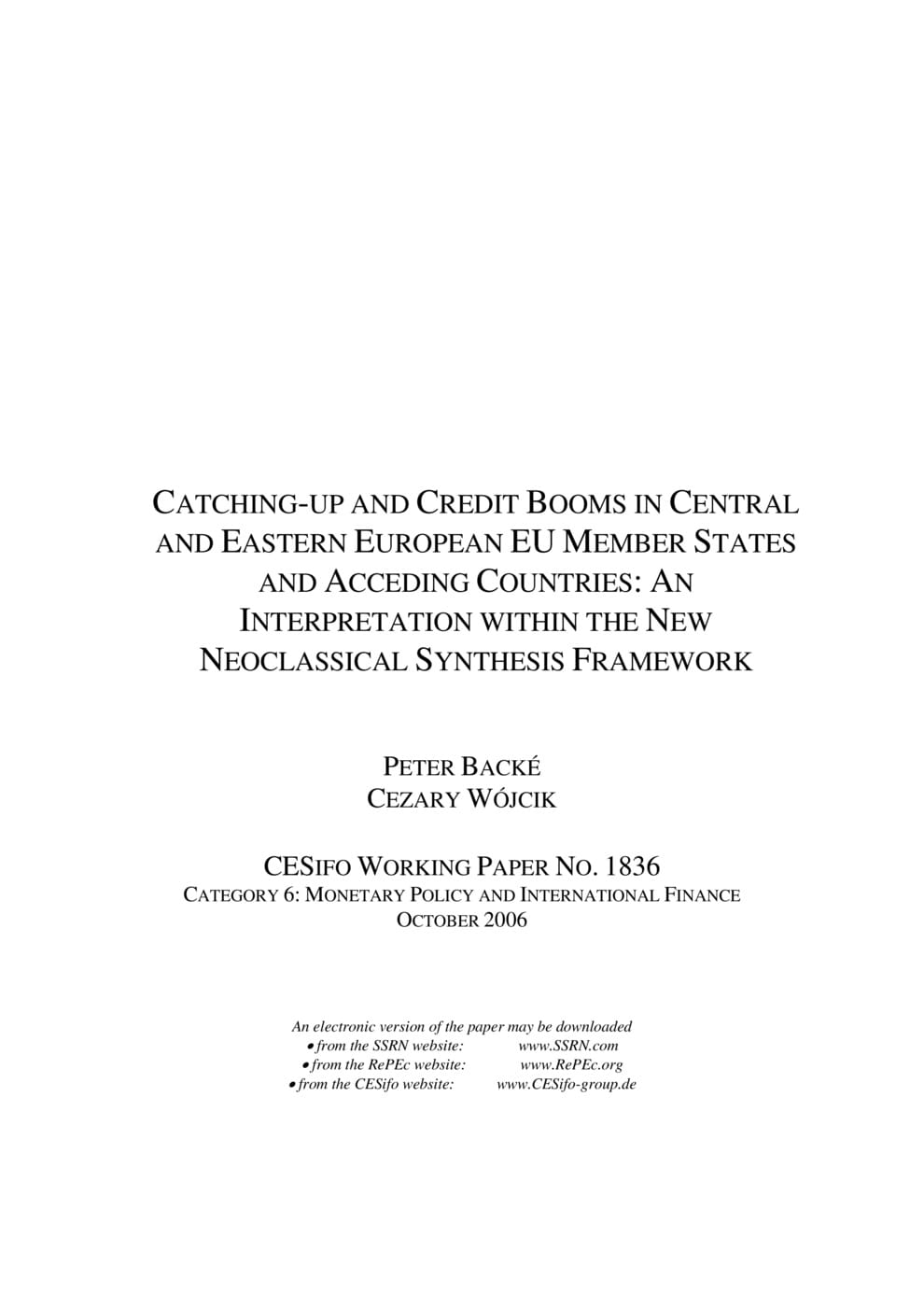Catching-up and Credit Booms in Central and Eastern European EU Member States and Acceding Countries: An Interpretation within the New Neoclassical Synthesis Framework
CESifo, Munich, 2006
CESifo Working Paper No. 1836

Credit to the private sector has risen rapidly in many Central and Eastern European EU Member States (MS) and acceding countries (AC) in recent years. The lending boom has recently been particularly strong in the segment of loans to households, primarily mortgage-based housing loans, and in those countries that operate currency boards or other forms of hard pegs. The main aim of this paper is to propose a conceptual framework to analyze the observed developments with a view to exploring some policy implications at a stage in which these countries are preparing for their prospective integration with the euro area. To achieve this, we first use a stylized New Neoclassical Synthesis (NNS) framework, which has recently been advanced by Goodfriend (2002) and Goodfriend and King (2000). We then discuss the implications of the NNS model for credit dynamics and ensuing monetary policy challenges. Specifically, we emphasize consumption smoothing as an important channel of the observed credit expansion and we show how it is related to and how it affects the monetary policy making in MS and AC. In doing so, we place our discussion in the context of the monetary integration process in general and the nominal convergence process in particular.